Submitted by WA Contents
Magnificent narrative exhibition | Museum of the History of Polish Jews in Warsaw , Poland
United Kingdom Architecture News - Nov 11, 2014 - 12:51 23338 views
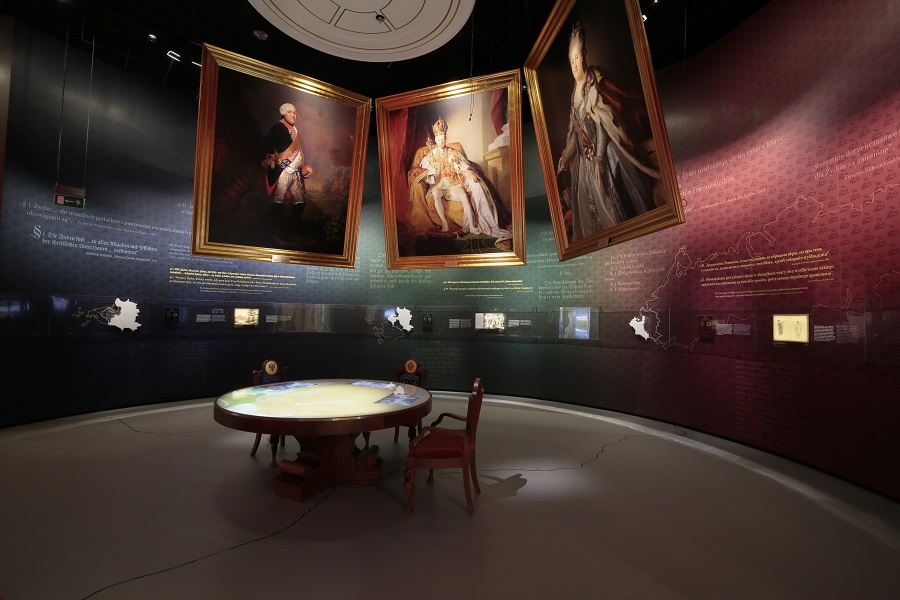
As many as 7 thousand square metres of walls covered with specially designed scenographic elements. Over 4 thousand square metres of floor space available to visitors. 1.5 thousand pieces of LED lights and 250 components of multimedia equipment. This is how the core exhibition of the Museum of the History of Polish Jews POLIN presents itself in numbers. The largest narrative historical exhibition ever staged in Poland was open on 28 October.
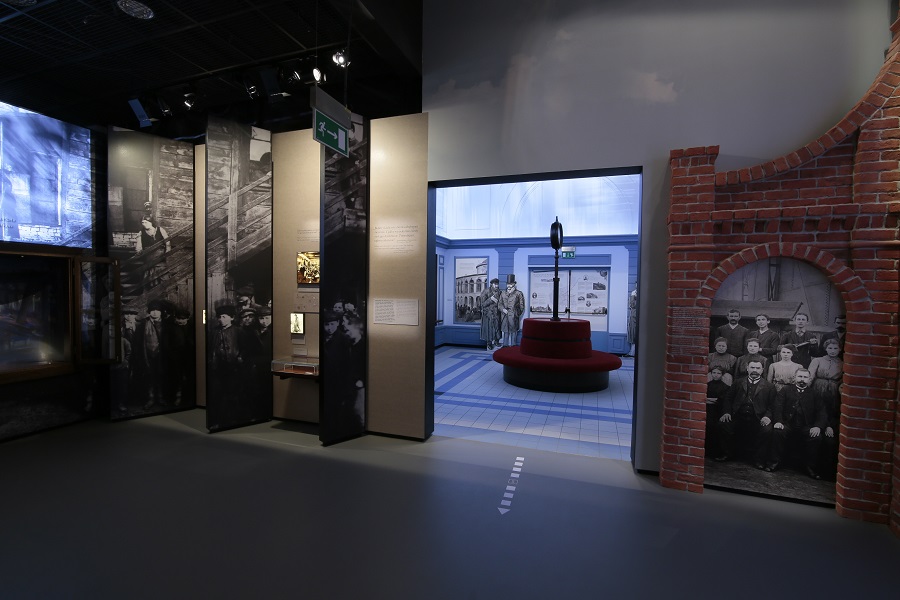
The POLIN Museum’s core exhibition presenting the thousand-year-long history of the Jewish people on the Polish soil has been developed by the architectural studio Nizio Design International. The eight museum galleries are filled with the scenography that has been specially prepared for the purposes of the exhibition. The specific nature of the story told through the exhibition and the relatively small number of surviving historic objects caused the designers to have to create from scratch the forms, objects, and materials referencing to those originating from centuries ago. Also, these circumstances caused them to reconstruct history using innovative technical and technological solutions, as well as give new functions, forms, and applications to the existing ones. A large part of the exhibition’s elements is comprised of unique prototypes that have never been applied in this kind of exhibitions.
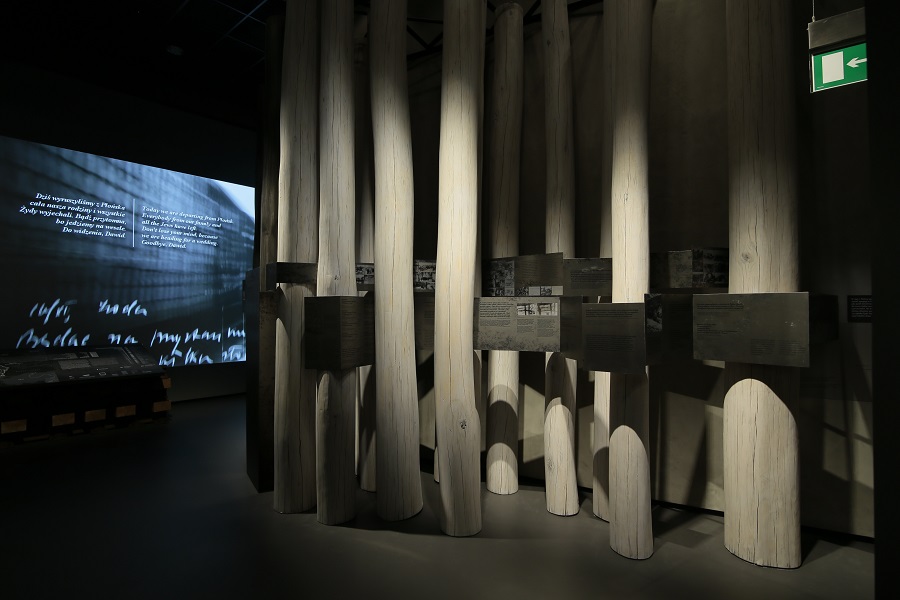
The core exhibition relies on passive and active multimedia stations, furniture, paintings, decorative elements, and rare historic objects. All of the exhibition’s components have been delivered by select teams of architects, historians, graphic designers, craftsmen, visual artists, animators, and visualists. The scenography at each gallery tells a separate story, in terms of the form and content, and its individual elements are styled to the given period.
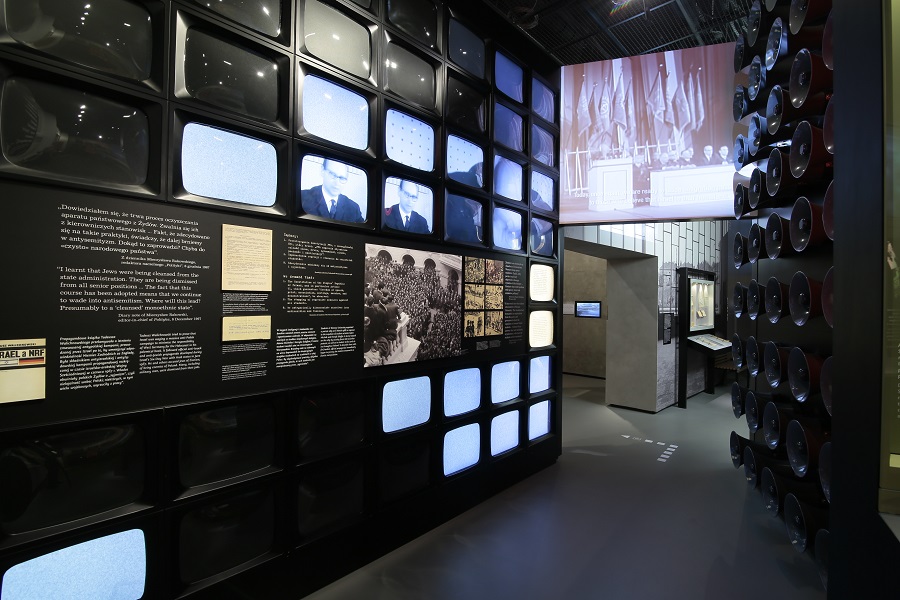
Miroslaw Nizio’s studio worked on the design and construction of the core exhibition in the years 2011-2014. Both the spatial layout and the materials used are subordinated to the logic of the historical narrative. The “Forest” gallery that opens the exhibition is an installation inspired by the legends relating to the arrival and settlement of Jews on the Polish soil. The paintings and decorations within the “First Encounters” gallery, hand-made by Polish artists, form the background of the story of the fates of Jewish settlers over the time span of several centuries, from the year 960 to 1500. The paintings were first developed on computers to be then transferred onto paper at a scale of 1:50. In the final stage the lines were reproduced on mineral plaster. The most essential scenographic element of the “Paradisus Iudaeorum” gallery that presents the Golden Age of the Jewish community is the interactive model of Krakow and Kazimierz which took 6 months to build. –This elaborate structure consists of more than a thousand elements. In it we have put interactive screens, and on the model displayed are multimedia projections. The whole shows how the Jewish community used to function – says Miroslaw Nizio.
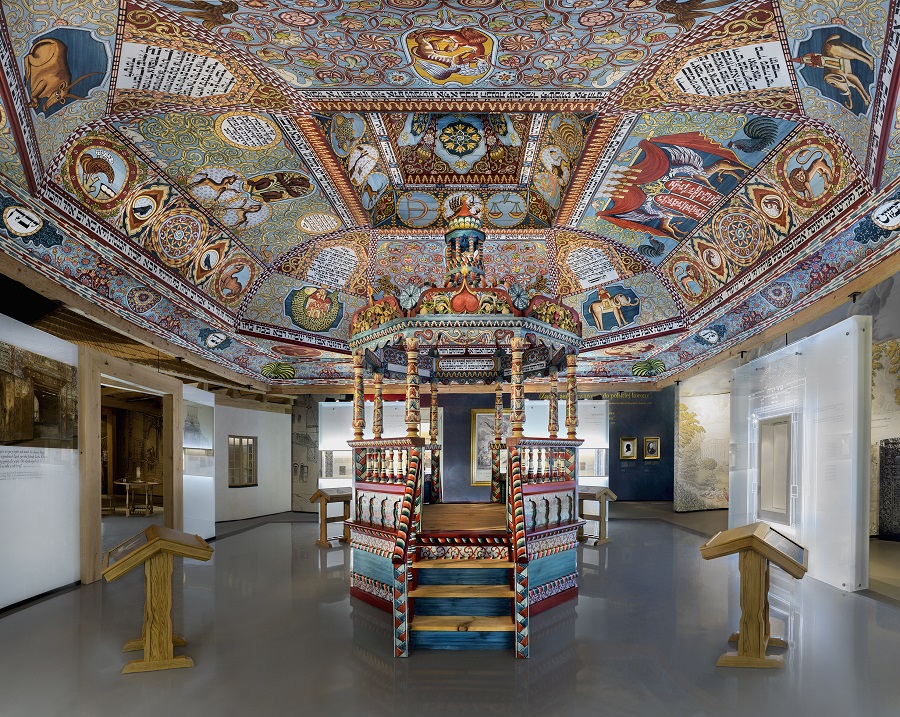
The “The Jewish Town” gallery, dedicated to the 17th and 18th-century history, features the structures representing typical interiors of the home, inn, or Jewish market stall, all built of oak wood by the craftsmen collaborating with the NDI. Here, the multimedia, props, and animations depict the scenes of everyday Jewish life. The focal point of the gallery is the reconstructed wooden bimah, the roof that hangs over it, and the ornamented vault of the Gwozdziec synagogue. The “Encounters with Modernity” gallery presents the period of the first partition of Poland until 1914. –We start the tour by sitting down at an interactive table that shows the history of the geopolitical divisions during the partitions – says the architect. Our attention is drawn by the symbolic empty throne which the craftsmen in full made of enamelled glass. In the farther part of the gallery is a room styled to a railway station concourse. The multimedia presentation here shows the Jews’ contribution to the construction of the railway network, as well as the mass migrations. Also here, one can see a replica, made of specially fired bricks, of the gate to Izrael Poznanski’s factory in Lódz and a presentation relating to the industrial development in the 19th century. The “On the Jewish Street” gallery is dedicated to the inter-war period. Its heart is the former Zamenhof Street reconstructed within the museum space. The six-metre-high white facades of the tenements become the plain for slide shows presenting the former facades of buildings with signboards of restaurants, workshops, and shops. Straight from the street one can enter the premises with rooms styled to a cinema or cafe and dedicated to the cultural and political life in the inter-war era. Separate rooms are dedicated to childhood and education.
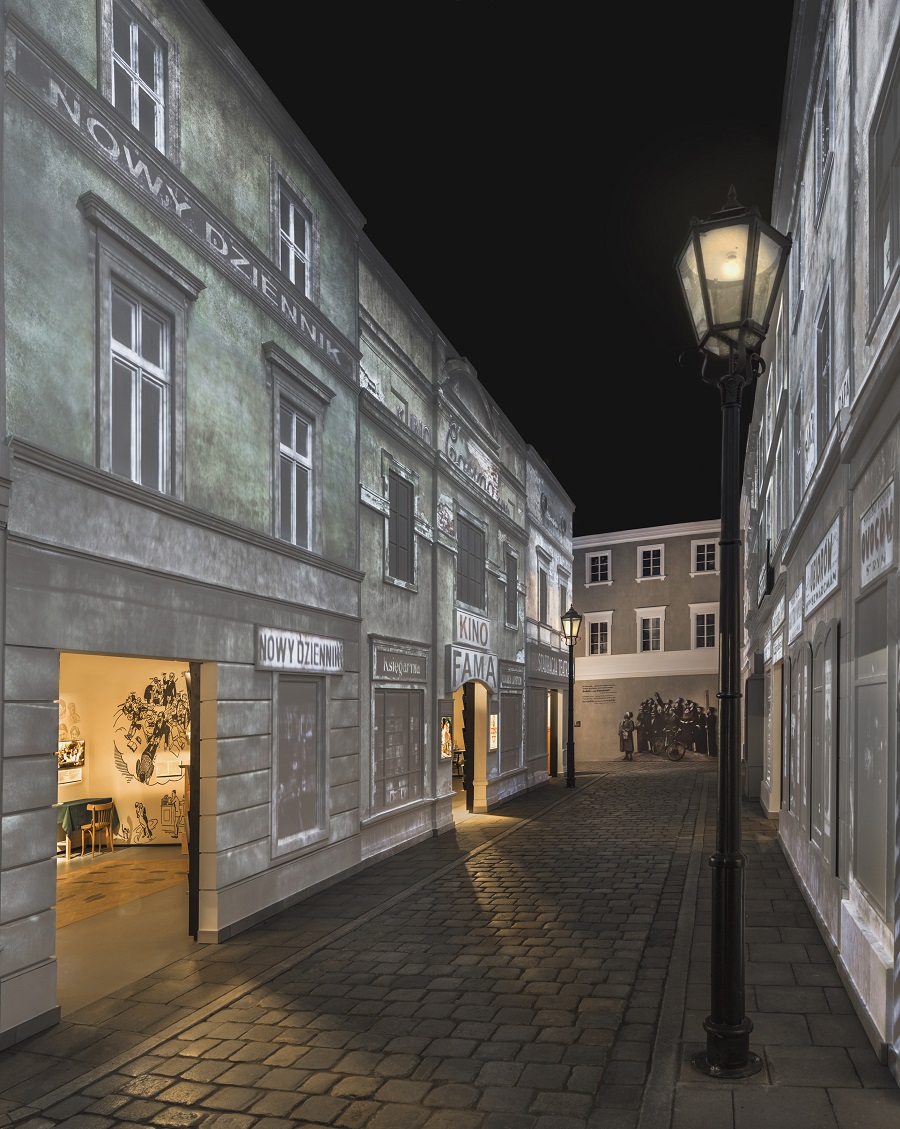
The “Holocaust” gallery refers to World War II. The artistic means and iconography applied here to a greater extent than in the other galleries rely on the symbolic approach to this difficult subject. The designers avoid literalism and celebration of terror in showing the tragic Jewish fate. The gallery’s room structure is different. Narrow corridors, tilted walls, darker colours and dim light, and the materials, such as concrete or rusting steel, heighten the sense of anxiety, tragedy, and besetment. They build a clear contrast between this and the other parts of the exhibition. The final “Postwar Years” gallery is dedicated to the period after 1945. Here presented is, e.g. the activity of the clubs of the Jewish Social and Cultural Association in Poland and the consequences of the post-war pogroms and anti-Semitic smear campaign of the communist authorities in Poland.

In the years 2011-2014 the works to design and construct the core exhibition involved all together 140 people. The project team headed by Miroslaw Nizio and dedicated to creating the exhibition was 40-strong. The project implementation and construction works involved approximately 100 people employed by the subcontractors. - While designing and delivering the core exhibition we took care to use the best materials that met the ultimate standards of quality, appearance, and safety – says Miroslaw Nizio. The materials used for the construction, such as wood, concrete, and steel are going to nobly age and gain expression with the passage of time. The care for the finishing details and application of state-of-the-art and functional exhibition solutions have resulted in one of the most spectacular narrative exhibitions in Poland.

The very design works took one and half years, while it took more than two years to actually build the exhibition. – The design works overlapped with the construction of the core exhibition. Even though at the start it could have appeared that to deliver this kind of a project in such a short time would be unrealistic, we have made the grade – says Miroslaw Nizio.
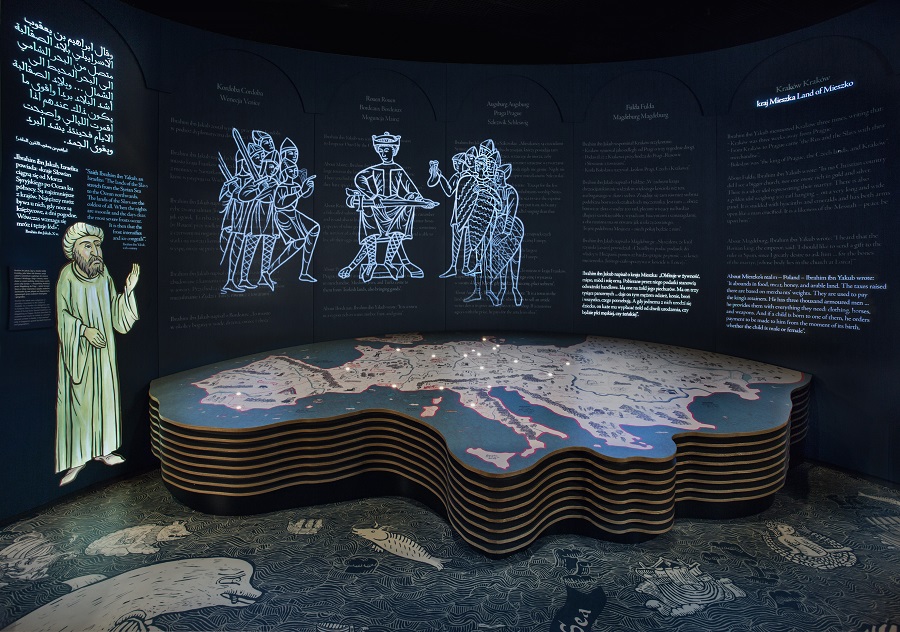
The Event Communications company developed the concept proposal of the exhibition in the years 2000-2003. Next, they worked on the detailed design in the period 2006-2011. The Polish architectural studio Nizio Design International completed the design and supplemented it with the graphic design, as well as prepared the building and detailed documentation and built the exhibition between 2011-2014. Nizio Design International has also developed the detailed design of the Forest gallery and the Post-89 installation.

> via businessandculture.home.pl
